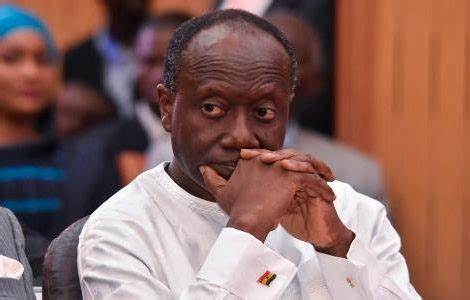The International Monetary Fund is forecasting a worrying 76.7% of debt-to-Gross Domestic Product ratio for the country this year, according to its Sub Saharan Africa Regional Economic Outlook report released today.
This put the nation in the high risk of debt distress country category.
The debt-to-GDP ratio will however drop slightly to 74.7 percent of GDP in 2021.
The Bretton Wood institution said the rising debt posses a threat to both the fiscal and monetary economy, particularly revenue mobilization, exchange rate and inflation.
The nation’s debt-to-GDP ratio has been growing sharply, from 44% in 2016 to 58.3% in 2017and subsequently to 59.1% in 2018.
In 2019, the natio’s debt stood at 62.8% of GDP, about GHS217.9 billion.
The report said 11 sub-Saharan African countries are currently at high risk of debt distress, and six are in debt distress.
Finance Minister, Ken Ofori-Atta has already appealed to the World Bank, IMF and the G20 to extend the debt repayments of emerging and developing countries.
“We must address worsening debt vulnerabilities to avoid a debt crisis, beyond the Debt Suspension Initaitive. When debt cancellations or restructurings are necessary, a framework and mechanisms should be put in place to achieve expeditious and fair sovereign debt resolution involving official and private creditors. The IMF, World Bank and development partners should urgently work on such a framework and find the means to provide exceptional financing to countries undergoing debt restructuring”, he said at a recent IMF/World Bank meeting.
The Sub Saharan Africa Regional Economic Outlook report pointed out that exchange rate volatility could negatively affect debt-servicing costs, given the often large fraction of public debt denominated in foreign currency.
As a result, several sub-Saharan African countries may have been pushed beyond the sustainability threshold, adding if a country’s debt service exceeds its capacity to pay, it is in the best interests of both creditors and sub-Saharan African borrowers to agree on terms of relief from creditors where needed, using Angola and Zambia as case studies.
Total public debt stock
Ghana’s debt hit GHS263 billion in July 2020.
The external component of the debt was estimated at GHS138 billion [$24.3bn], representing 35.8 percent of GDP.
The domestic component of the debt was also estimated at GHS125.1 billion, approximately 32.5% of GDP.
The financial sector resolution bond however constituted GHS14.2 billion, which is equivalent to 3.7 percent of GDP.
Interest payments
The country is expected to spend about GHS26 billion on interest payments for this year alone.
This will be a little over GHS6 billion spent in 2019.
Last year, interest payments cost the nation about GHS19.756 billion on loans borrowed.
Latest Stories
-
Trump’s call with Putin exposes shifting ground on Ukraine peace talks
2 hours -
If not for Gold-for-Oil, our economy would have collapsed – Bawumia
2 hours -
‘NDC has no policy behind cedi gains’ – Bawumia dismisses opposition credit for currency stability
2 hours -
US Supreme Court lets Trump end deportation protections for 350,000 Venezuelans
3 hours -
IGP orders raid on illegal mining hub at Wassa Gyapa after JoyNews reports
3 hours -
Russia and Ukraine to ‘immediately’ start ceasefire talks, says Trump
3 hours -
France to open high-security prison in Amazon jungle
3 hours -
Gary Lineker: A sorry end to a BBC career
4 hours -
Lineker to leave BBC sooner than planned after antisemitism row
4 hours -
Nigerian judges endorse Ikot Ekpene Declaration to strengthen digital rights protection
4 hours -
Call for load shedding timetable misplaced; power generation meets peak demand – Energy Ministry
4 hours -
Cedi records 17.17% appreciation to dollar; one dollar going for GH¢13.50
4 hours -
Interplast named among Financial Times’ fastest-growing companies in Africa
5 hours -
GPRTU to reduce transport fares by 15% effective May 25
5 hours -
Ghana Alphas, Tau Alpha Lambda donate to Abeadze State College
5 hours

